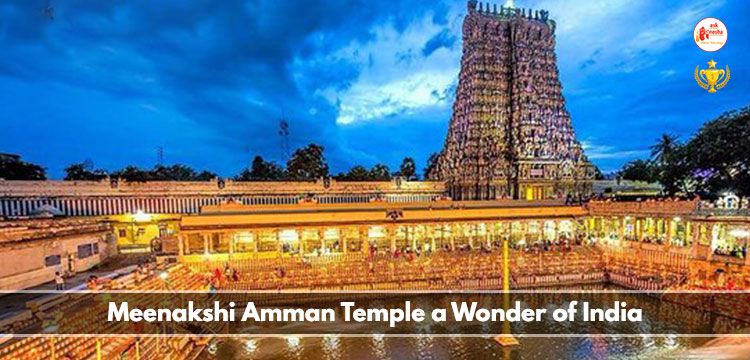Meenakshi temple is also referred to as Meenakshi Amman temple. It is a historic Hindu temple located on the southern bank of the Vaigai River in the temple city of Madurai, Tamil Nadu in India. It is dedicated to Meenakshi (form of Goddess Parvati) and her consort Sundareshwar (form of Shiva). The temple is at the core of the ancient city of Madurai mentioned in the Tamil Sangam literature with the goddess temple mentioned in 6th-century texts. Recently, the temple has been tagged as one of the 7 wonders of India along with other stunning monuments like Taj Mahal. There are around 33,000 sculptures in the temple complex of Meenakshi Amman temple in Madurai.
Story behind the Meenakshi Amman temple
Malayadwaja Pandya was the king of Madurai and he was childless for a long time. To overcome this obstacle in his life they performed a number of yagnas (sacrifices made before a sacred fire) for a child who could be an heir to his throne. On one occasion while performing the yagya, a 3-year-old girl came out of the fire and Malayadwaja was very glad. But, the girl had 3 breasts and this was worrisome for Malayadwaja. However, a divine person assured him that the third breast would disappear as soon as she met her companion. The girl grew up to be a beautiful and brave princess. She won many battles but eventually lost her heart to Lord Shiva when she met him on the battle-field in Kailash. As soon as she saw Lord Shiva, her 3rd breast disappeared and she recognized her divine companion. The later story unfolded, revealing that she was none other than Shivas wife, Parvathi. After ruling over the Pandya kingdom for a while, both of them settled in the Madurai temple as Meenakshi and Sundareswarar.
Architecture and grandeur of Meenakshi Amman temple
The enormous temple complex is devoted to Shiva, known as Sundareshvara and his consort Parvati or Meenakshi. The original temple was built by Kulasekara Pandya but the entire praise for making the splendid temple goes today to the Nayaks. The Nayaks ruled Madurai from the 16th-18th century and left a majestic imprint of their rule in the Meenakshi Amman Temple. The temple complex is within a high-walled enclosure, at the core of which are the 2 sanctums for Meenakshi. Sundareshwara is surrounded by a number of smaller shrines and grand pillared halls. Especially impressive are the 12 gopuras. Their tall towers rise from solid granite base and are covered with the explicit figures of deities, monsters painted and mythical animals in vivid colors. A visitor who enters the temple through the eastern gateway first enters this Mandapam or Hall. It was built by the wives of Thirumalai Nayakar's named Rudrapathi Ammal and Tholimamai. In this hall, food was distributed to all the devotees who came from far off places. Right next to this hall is the Meenakshi Nayaka Mandapa, a large columned hall used to store food and set up shops. This hall has a votive lamp-holder with 1008 lamps which are lit on festive occasions presenting a stunning sight. The sculptures on the pillars here relate some of Lord Shiva's miracles. It is also the story of Meenakshi's birth and her life as the princess of Madurai. 
Festival pertaining to Meenakshi Amman temple
Meenakshi-Thirukalyanam (divine marriage of Meenakshi) is the most significant festival which is observed with full fervor at the temple. Every year, this festival falls in the month of April. Besides this festival, occasions like Shivratri and Navratri are also celebrated with full fervor. In the vein of other Shakti temples in Tamil Nadu, all the Fridays of the Tamil months of Thai (Jan 15 to Feb 15) and Aadi (July 15 - Aug 17) are also commemorated here.























 Translate
Translate